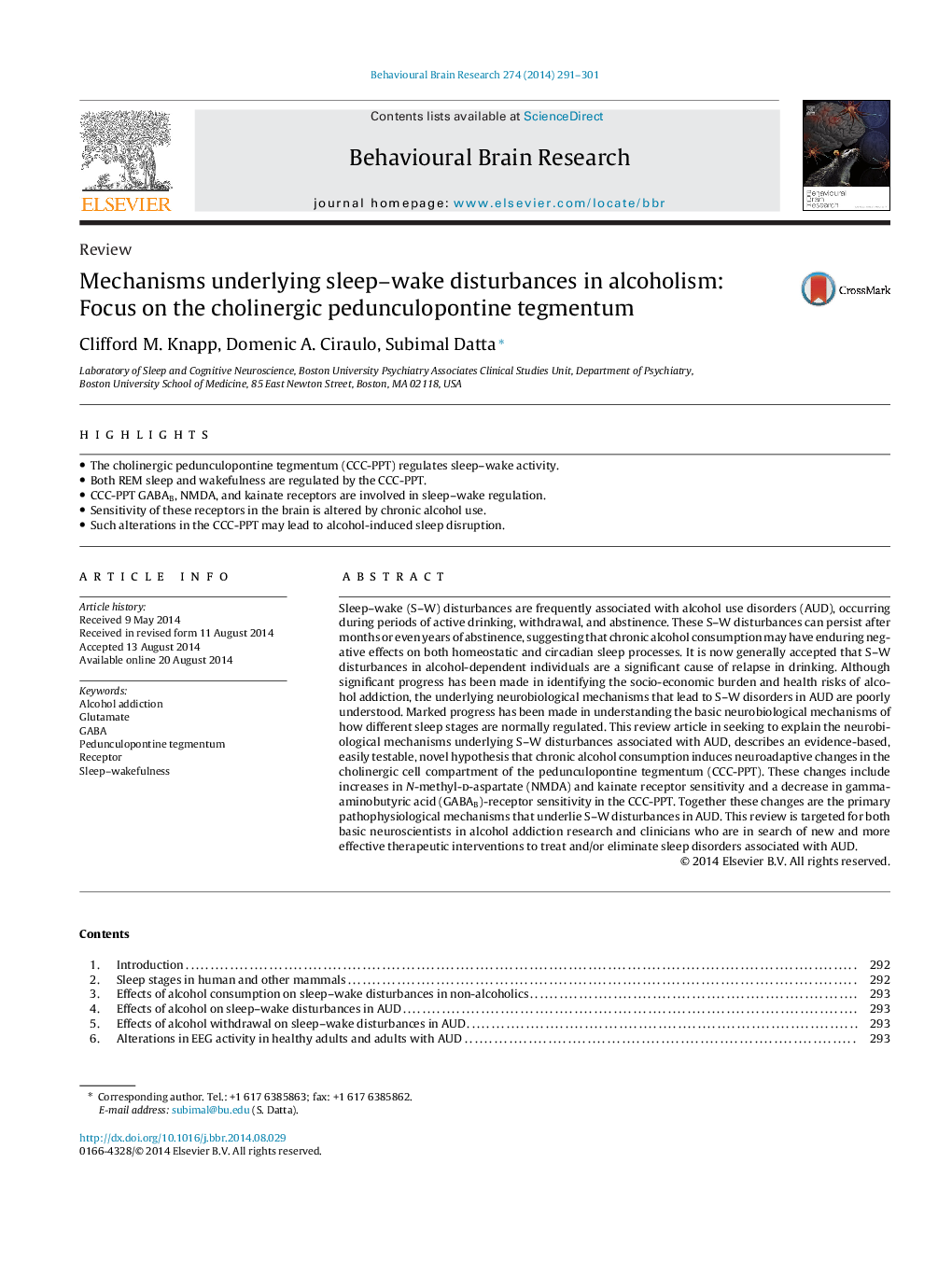| کد مقاله | کد نشریه | سال انتشار | مقاله انگلیسی | نسخه تمام متن |
|---|---|---|---|---|
| 6257705 | 1612958 | 2014 | 11 صفحه PDF | دانلود رایگان |

- The cholinergic pedunculopontine tegmentum (CCC-PPT) regulates sleep-wake activity.
- Both REM sleep and wakefulness are regulated by the CCC-PPT.
- CCC-PPT GABAB, NMDA, and kainate receptors are involved in sleep-wake regulation.
- Sensitivity of these receptors in the brain is altered by chronic alcohol use.
- Such alterations in the CCC-PPT may lead to alcohol-induced sleep disruption.
Sleep-wake (S-W) disturbances are frequently associated with alcohol use disorders (AUD), occurring during periods of active drinking, withdrawal, and abstinence. These S-W disturbances can persist after months or even years of abstinence, suggesting that chronic alcohol consumption may have enduring negative effects on both homeostatic and circadian sleep processes. It is now generally accepted that S-W disturbances in alcohol-dependent individuals are a significant cause of relapse in drinking. Although significant progress has been made in identifying the socio-economic burden and health risks of alcohol addiction, the underlying neurobiological mechanisms that lead to S-W disorders in AUD are poorly understood. Marked progress has been made in understanding the basic neurobiological mechanisms of how different sleep stages are normally regulated. This review article in seeking to explain the neurobiological mechanisms underlying S-W disturbances associated with AUD, describes an evidence-based, easily testable, novel hypothesis that chronic alcohol consumption induces neuroadaptive changes in the cholinergic cell compartment of the pedunculopontine tegmentum (CCC-PPT). These changes include increases in N-methyl-d-aspartate (NMDA) and kainate receptor sensitivity and a decrease in gamma-aminobutyric acid (GABAB)-receptor sensitivity in the CCC-PPT. Together these changes are the primary pathophysiological mechanisms that underlie S-W disturbances in AUD. This review is targeted for both basic neuroscientists in alcohol addiction research and clinicians who are in search of new and more effective therapeutic interventions to treat and/or eliminate sleep disorders associated with AUD.
Journal: Behavioural Brain Research - Volume 274, 1 November 2014, Pages 291-301